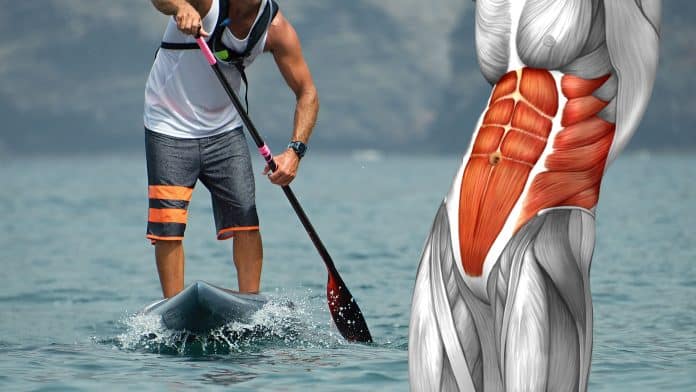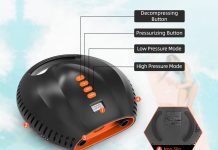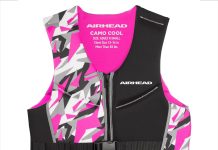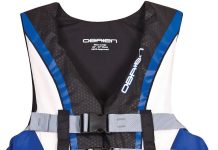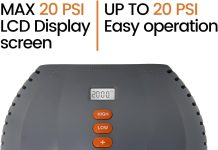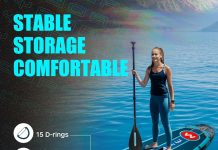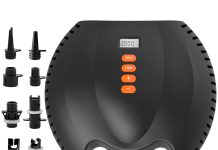If you’re looking for a full-body workout that’s enjoyable and versatile, look no further than SUP paddling. Standing atop a sturdy paddleboard, gliding gracefully across the water, you may wonder: What muscles am I working out?
We’re here to shed some light on that question and help you understand the incredible benefits of SUP paddling for your overall fitness. So grab your paddle, hop on your board, and dive into the world of muscle engagement on the water!
Regarding stand-up paddleboarding (SUP), you might think it’s all about balance and core strength. While those factors are essential, SUP paddling engages a wide range of muscles throughout the body. In this article, we will explore the various muscle groups activated during SUP paddling and delve into the benefits of this full-body workout.
Shoulder Muscles
One of the primary muscle groups that SUP paddling targets is the shoulders. The repetitive paddling motion engages the deltoids, the muscles on the shoulders’ front, side, and back. These muscles work together to provide stability and strength during each stroke. Additionally, the rotator cuff muscles surrounding the shoulder joint are activated to keep the arms adequately aligned and prevent injury.
Back Muscles
SUP paddling heavily involves the muscles in the back, specifically the latissimus dorsi, rhomboids, and erector spinae. The latissimus dorsi, or the “lats,” are the large muscles spanning the middle and lower back. These muscles pull the paddle through the water and generate power. The rhomboids help stabilize the shoulder blades, while the erector spinal muscles support the spine and maintain an upright posture.
Core Muscles
While SUP paddling may appear primarily an upper-body workout, it engages numerous core muscles. The rectus abdominis, commonly known as the abs, are targeted as they provide stability and assist in forward propulsion. The internal and external oblique muscles are also activated during each stroke, aiding in rotational movements and maintaining balance. Additionally, the transverse abdominis, the deepest core muscle, stabilizes the trunk and protects the spine.
Leg Muscles
Although mostly hidden below the water’s surface, the leg muscles are crucial in SUP paddling. The quadriceps at the front of the thighs maintain balance and provide stability on the board. The hamstrings, which are located on the back of the thighs, help generate power when pushing off the paddle. The calves are also engaged to keep the feet stable on the board and assist in maintaining balance. Lastly, the hip flexors are activated when lifting the legs during each stroke.
Arm Muscles
Unsurprisingly, SUP paddling activates the arm muscles, considering they are responsible for propelling the board through the water. The biceps, located on the front of the upper arms, are engaged during the pulling motion of the paddle. On the other hand, the triceps on the back of the upper arms are activated during the extension phase of each stroke. The brachialis muscle, located underneath the biceps, also contributes to the overall strength and power generated during paddleboarding.
Chest Muscles
The chest muscles, specifically the pectoralis major and pectoralis minor, are crucial in providing stability and strength during SUP paddling. The larger of the two, the pectoralis major, is responsible for the pushing motion of the paddle and supports the shoulders and arms. The pectoralis minor assists in stabilizing the shoulder blades and aids in maintaining an upright posture on the board.
Hip Muscles
SUP paddling also involves several muscles in the hip area. The hip adductors, located on the inside of the thighs, aid in maintaining balance and stability while standing on the board. The hip abductors, located on the outside of the hips, are activated during lateral movements and assist in maintaining proper alignment. These muscles support the lower body and contribute to a smooth paddling experience.
Glute Muscles
Another set of muscles targeted during SUP paddling are the glute muscles. The gluteus maximus, the most significant muscle in the body, provides power and propulsion when driving the paddle through the water. The gluteus medius and gluteus minimus, located on the sides of the hips, work to stabilize the pelvis and maintain balance on the board. Engaging these muscles strengthens the glutes and contributes to better overall stability while paddleboarding.
Oblique Muscles
In addition to the core muscles mentioned earlier, the oblique muscles play a significant role in SUP paddling. The internal and external obliques on the sides of the abdomen aid in rotational movements and provide stability during each stroke. These muscles work with the core muscles to maintain balance and control while paddling.
Triceps and Biceps
Lastly, the triceps and biceps are key muscle groups engaged during SUP paddling. As mentioned earlier, the triceps are activated during each stroke’s extension phase, helping push the paddle through the water. On the other hand, the biceps assist in the pulling motion, generating power and propelling the board forward. These muscles work with the shoulders and arms to provide strength and endurance during paddleboarding.
In conclusion, stand-up paddleboarding is a fantastic full-body workout that engages many muscles. From the shoulders and back muscles to the core, legs, arms, chest, hips, and glutes, SUP paddling offers a comprehensive workout targeting primary and smaller muscle groups. So, the next time you hit the water, remember the fantastic benefits you’re providing to your body as you paddle your way to health and fitness.

